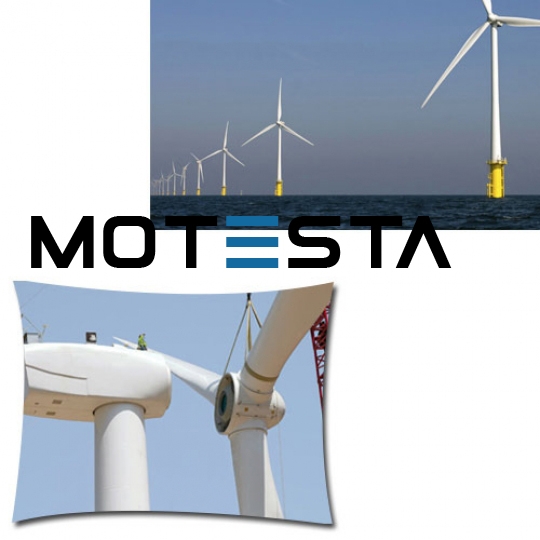 lab@motestainstruments.com | Civil and Mechanical Engineering Lab Equipments India China
lab@motestainstruments.com | Civil and Mechanical Engineering Lab Equipments India China

Code: NLE-17-0164
Wind Farm Simulator Model.
Technical Specification and Description of the model
The software shall represent the different components of the wind turbine using block
diagrams and it shall show the different type of connections during operation. The model shall
includeapplications that simulate the behavior of the entire wind farm, organized around its
SCADA system and a single wind turbine installed in a wind farm
The WFS applications shall follow the principles of:
Simulators behave as close to their real counterparts as possible.
the Human Machine Interface provides interaction with as many components and
subsystems of wind turbines as possible. The complete HMI shall allow the user to
access not only the variables normally available through the Wind Turbine Control
Terminal, but also simulated “cables” corresponding to connections among the
subsystems. There shall be graphic representations to help users identify the wind
turbine components.
Timing of the evolution of the internal signals are as close to real counterpart as
possible.
When convenient, real parameters shall be adapted to classroom settings for the sake
of usability.
The User Interface for the Simulator SCADA shall include the following items:
view of each WT, indicating its internal name, its status (Production, Stopped or Out of
Order), the actual production (in percent with respect to the maximum), and the cables
that connect it to the Point of Common Connection (typically the Substation).
A SCADA view, or a spreadsheet view, where the user can access additional information
on each WT and make modifications to some of them.
A Maintenance framework through which the user can simulate the change of the WT
selected in the SCADA view, from “Out of Order” to “Operational.”
A Production framework, also common in most wind farm SCADAs, where the user can
see the actual Total Power production, together with the Maximum available Power
from the wind.
A Meteorological framework where the user can set values for real situations that are
obtained from the meteorological station of the Wind Farm.
An “Automatic Dispatching” checkbox through which the user can establish a “manual”
of “Automatic Dispatching” operation of the Wind Farm.
This simulated wind Turbine Drivetrain synoptic shall be designed to display the most important
signals that arrive in the Nacelle emulator, and the signals going out from the Nacelle emulator.
The following is a list of these signals:
Rotor speed (rpms), from the Nacelle emulator.
Generator speed (rpms), from the Nacelle emulator.
Pitch value (º), from the Controller emulator.
Hydraulic circuit pressure of the braking system, from Nacelle emulator.
Hydraulic circuit Pump status, from the Controller emulator.
The state of the valve in the hydraulic circuit, controlled by the “Soft brake” and “Hard
brake” coming from the Controller emulator.
The status of the Pressure switch in the hydraulic circuit.
The Brake Released status (ON or OFF) from the Nacelle emulator.
The state of each Generator connection switch (Large: 4 poles and Small : 6 poles), from
the Controller emulator.
The state of the Over speed detectors (VCU, HCU)
The state of the Tower vibrations sensor.
The temperatures for the Ambient (setting), Rotor bearing, the Gearbox and the
Generator from the Nacelle emulator.
In the simulator, it shall show that the purpose of the Wind & Nacelle synoptic is:
To allow the user to control wind speed and direction.
To show the Nacelle orientation.
To show the number of cable turns connecting the Nacelle’s generator to the Electric
Panel at the bottom of the WT.
To show the (simulated) wind vane signal.
To show the signals controlling the yawing motors, the wind vane signal and the power
cable turns. There are also control boxes that allow the user to change wind speed and
direction, and manually control the yawing motors.
The simulator shall have a multi view of Electrical Panel synoptic and it shall combine
representations for many aspects of the electrical power circuits of a Wind Turbine. Each WT is
connected to the PCC (Point of Common Connection) on the Wind Farm either in low voltage or
at medium voltage. In the later situation, the WT shall include a lowâ€toâ€medium voltage
transformer, generally located in the base of the tower. The various parts of this synoptic shall
display as much information as possible to the user about the parameters values and a number
of internal variables. It shall be used to display the following information Outputs, Inputs, from
the Grid, Parameters, Values for internal variables used in the algorithms, Buttons for the
Manual Yawing control, Buttons for activating the “normal” operation (“START”)or passing to
Manual control (“STOP”), Information about the internal State Machines (Operation and
Security)